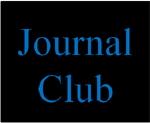 The description of molecular and nanoscopic systems became an important area for research in the last few decades. This is due to the scientific interest in the improvement of our understanding of physical properties of existing materials and to the possibility of predicting new materials with special properties. In order to model these systems atomistically in a proper way, the use of quantum mechanical methods is frequently required. Despite the fact that these methods are highly successful in many cases, the associated computational cost is typically O(N³) or higher, depending on the specific approximations implemented. This characteristic poses serious limitations on the number of atoms that can be considered during a calculation and brings the necessity of using high performance computers, even for the simulation of relatively small systems. On the other hand, the alternative approach, namely the use of classical methodologies, is usually incapable to describe some important aspects of atomistic systems, like chemical reactivity, polarization and bond breaking or bond formation. In this context, an intermediate approach that could somehow bridge this gap between quantum and classical methods is desirable. For this end, there is the Reactive Force Field (ReaxFF), created by Adri van Duin and collaborators (J. Phys. Chem. A, 105 (2001), pp. 9396–9409), which consists of a reactive potential, parametrized with ab initio calculations. This potential, based on an empirical bond order methodology, is highly transferable and is able to mimic some quantum effects, like the creation or breaking of chemical bonds. The relatively low computational cost, if compared to quantum methodologies, makes it suitable for the description of chemical reactions and dynamical simulations of systems with tens of thousands of atoms using relatively modest computational resources. During the presentation, we will describe the ReaxFF potential and some recent applications to atomistic systems. We will also discuss briefly the methodology used in the development of new parameters for specific systems.
The description of molecular and nanoscopic systems became an important area for research in the last few decades. This is due to the scientific interest in the improvement of our understanding of physical properties of existing materials and to the possibility of predicting new materials with special properties. In order to model these systems atomistically in a proper way, the use of quantum mechanical methods is frequently required. Despite the fact that these methods are highly successful in many cases, the associated computational cost is typically O(N³) or higher, depending on the specific approximations implemented. This characteristic poses serious limitations on the number of atoms that can be considered during a calculation and brings the necessity of using high performance computers, even for the simulation of relatively small systems. On the other hand, the alternative approach, namely the use of classical methodologies, is usually incapable to describe some important aspects of atomistic systems, like chemical reactivity, polarization and bond breaking or bond formation. In this context, an intermediate approach that could somehow bridge this gap between quantum and classical methods is desirable. For this end, there is the Reactive Force Field (ReaxFF), created by Adri van Duin and collaborators (J. Phys. Chem. A, 105 (2001), pp. 9396–9409), which consists of a reactive potential, parametrized with ab initio calculations. This potential, based on an empirical bond order methodology, is highly transferable and is able to mimic some quantum effects, like the creation or breaking of chemical bonds. The relatively low computational cost, if compared to quantum methodologies, makes it suitable for the description of chemical reactions and dynamical simulations of systems with tens of thousands of atoms using relatively modest computational resources. During the presentation, we will describe the ReaxFF potential and some recent applications to atomistic systems. We will also discuss briefly the methodology used in the development of new parameters for specific systems.



